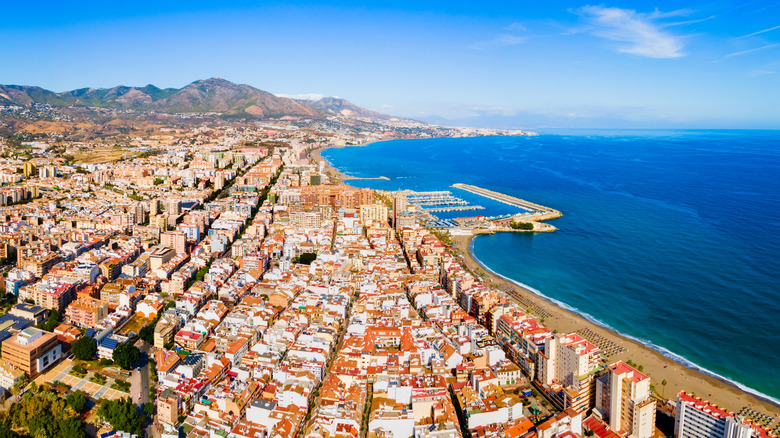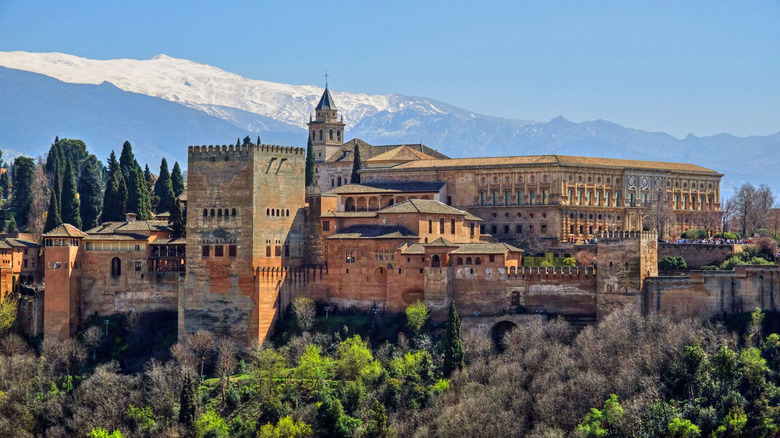Why Rick Steves Dislikes Most Of Spain's South Coast (And The Few Gems There He Actually Recommends)
If there's one thing that can ruin travel guru Rick Steves's sunny disposition on a European escapade, it's Spain's Costa del Sol in Andalusia. The country's southernmost coast, as described by Steves, is overdeveloped, tourist-saturated, and lacking authentic Spanish charm. "Anything resembling a quaint fishing village has been bikini-strangled and Nivea-creamed," he laments on his website. "Oblivious to the concrete, pollution, ridiculous prices, and traffic jams, tourists lie on the beach like game hens on skewers."
So even if beach bums do find pure bliss along Spain's southern Mediterranean coast, to all you savvy travelers who consider yourselves culture nuts like Steves, please do yourselves a favor and simply don't go. "It's just a lot of people from the rainy north of Europe looking for a change of climate, but not a change of culture," he complains in his podcast. Andalusia's once deeply rooted gitano heritage has been watered down by passionless parties and an idle population of vacationers. Restaurants might not even have a Spanish menu, but rather German, English, and Dutch, much to local disdain.
But if by necessity you do find yourself along the "Costa del Turismo" as Steves has nicknamed it, at least plan your trip around some of the standout coastal stops he does vouch for. Nerja, Gibraltar, and Tarifa have all received Steves' approval, thanks to their authentic Andalusian culture, charming architecture, and stunning natural attractions. Just outside Málaga, Andalusia's capital, Nerja's sea cliffs are practically spilling over with white-washed buildings, and the Nerja Caves inspire wonder with their 3-mile stretch of subterranean stalactites and stalagmites. Gibraltar is one of Steves' favorite "ends" of Europe, thanks to its captivating landmark with intercontinental views, aka The Rock. Tarifa he describes as a "workaday town with a historic center, broad beaches, and good hotels and restaurants (and is the perfect springboard for a quick trip to Tangier, Morocco)."
Why Steves prefers inland Andalusia to the Costa del Sol and where to go instead
Even if the Costa del Sol is one of Steves' least favorite places in Europe, some of his favorites are just around the corner. He's a champion of undiscovered or "back door" destinations where travelers can connect with local life and history rather than the commercialism of tourist infrastructure. "The quintessential image of Spain is the southern region of Andalucía, home of bullfights, flamenco, whitewashed hill towns, and glamorous Mediterranean resorts," says Steves on his website.
Typically, he directs travelers to spend more time inland, among Andalusia's Big Three cultural centers. There, travelers can experience the monumental design of Granada's hilltop Alhambra, Seville's dancing and festivities, and Cordoba's Mezquita — the world's one and only cathedral inside a mosque. There's also the epic Puente Nuevo bridge of Ronda, the modern birthplace of bullfighting.
In conversation with Málaga native Jorge Román on his podcast, he also uncovered how Andalusia's coastal capital has resurrected itself in the 21st century as an unexpected cultural center, ranking high among Spain's top cities. While its coastal beauty certainly contributes to its appeal, Málaga's improved popularity mainly owes its rise to the art scene that it has fostered. The Picasso Museum opened in 2003, celebrating Spain's most famous artist in his city of origin, and a satellite of Paris' beloved contemporary Centre Pompidou was installed in 2015. There's an impressive public bathhouse dripping in Moroccan tilework and geometric ceilings. Plus, the Soho arts district has been covered in large-scale graffiti murals that watch over the Contemporary Art Centre, local studios and galleries, and the monthly "Made in Soho" market.

